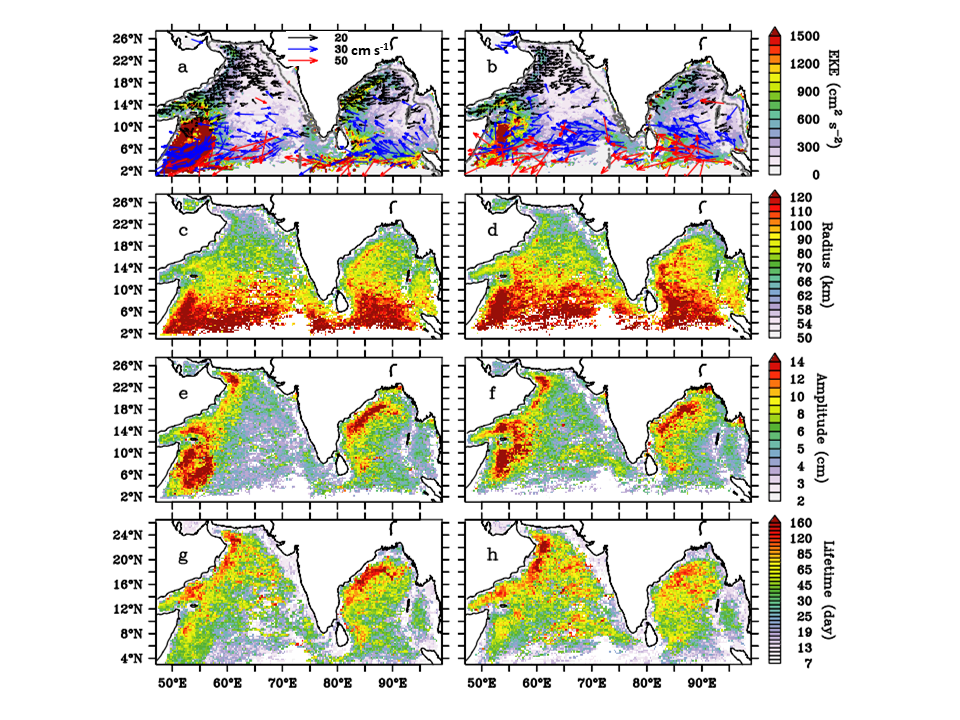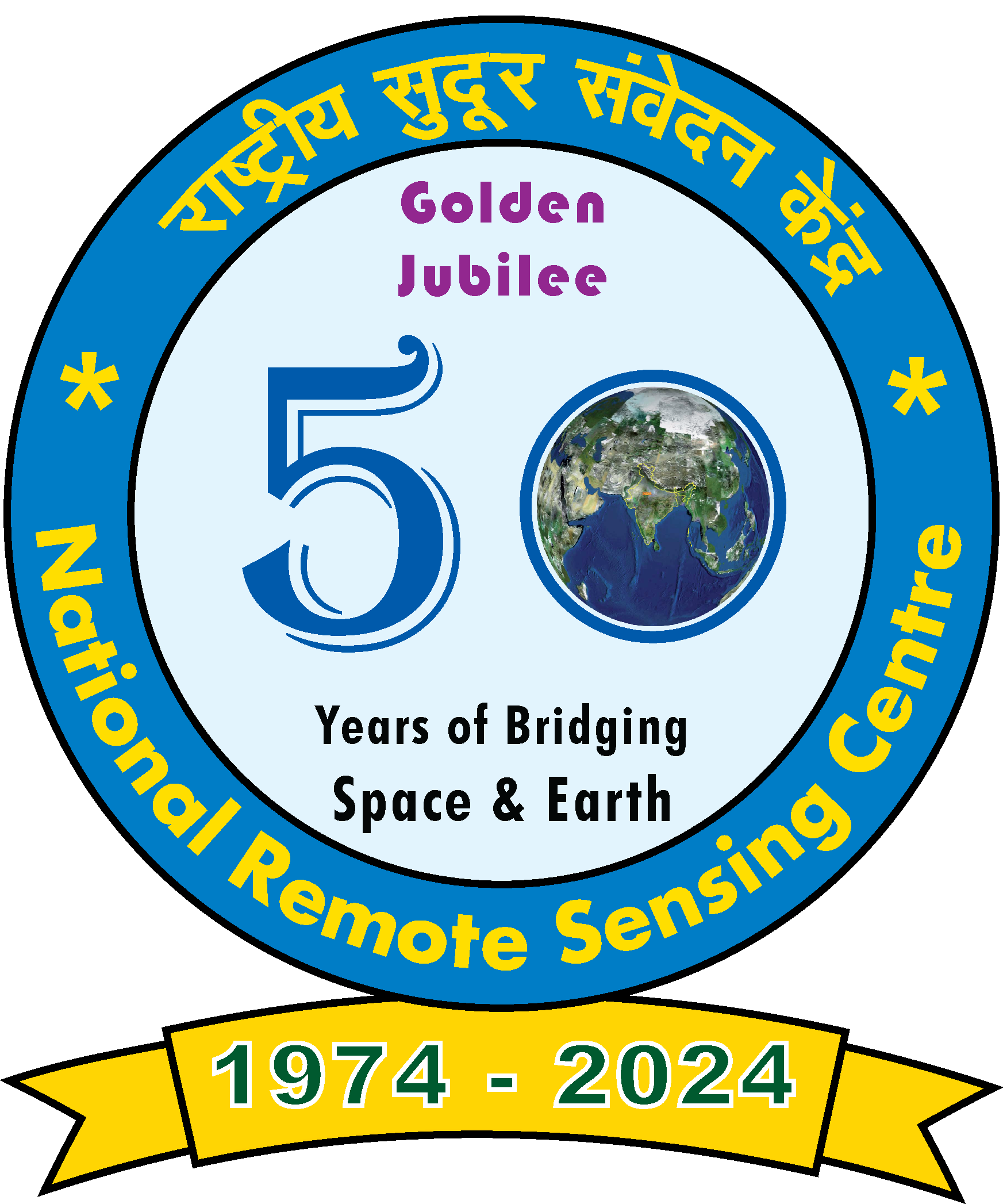Mesoscale Eddies in the north Indian Ocean
Eddies refer to swirling ocean circulation features, ubiquitous with spatial scales ranging from a few meters to a few hundred kilometres. The mesoscale eddies in the ocean generally represent eddies with space scales of 50–500 km and time scales of 10–100 days. The cyclonic/anticyclonic eddies have depressed (cold core)/elevated (warm core) centres. They play a significant role in transporting heat, mass, nutrients, and biogeochemical tracers in the ocean.
Satellite-measured daily sea level anomaly data are used from 1993 to 2021 to study the characteristics of mesoscale eddies in the north Indian Ocean. The procedure utilises information on the vorticity vector, Okubo-Weiss velocity gradient tensor and its threshold, and Lagrange transport. The continental margin of the Arabian Sea (AS) with its western and northeastern flanks, the mouth of the Gulf of Aden, the Lakshadweep Sea, the western margin of the Bay of Bengal (BOB), and the Andaman Sea have been depicted as the hotspot regions for eddy occurrences. Sensitivity analysis was carried out to fix threshold value of Okubo-Weiss parameter (W), which plays an important role in eddy identification and delimitation of mesoscale eddy boundaries. Probability distribution of mesoscale eddies based on their lifetime has been studied for different hotspot regions of the north Indian Ocean (NIO). It is observed that Cyclonic eddies (53%) are more in number than Anti-cyclonic numbers (47%) and out of the total eddies 87% of eddies are with lifetime less than 30 days.

Fig. Magenta (black) color rings and curves, respectively, represent cyclonic (anticyclonic) eddy boundaries and associated pathways overlaid on the Sea Level Anomaly data.
Eddies are smaller and less energetic, with longer life in the higher latitudes than the lower latitudes. The frequency of eddies exhibits distinct seasonal variability with preferred periods during May-August and November-March, respectively, for their occurrence in AS and BOB. They also show significant inter-annual oscillations and decreasing trends on the background of the weak boundary currents.

Fig. Characteristics of mesoscale eddies in the NIO during 1993–2021 generated using satellite based sea level data; the left and right panels, respectively, for cyclonic and anticyclonic eddies; (a, b) Eddy Kinetic Energy (cm2 s−2) in color and drift velocity in vector; (c, d) radius (km); (e, f) amplitude (cm) and (g, h) lifetime (days).
Click here to Read More




